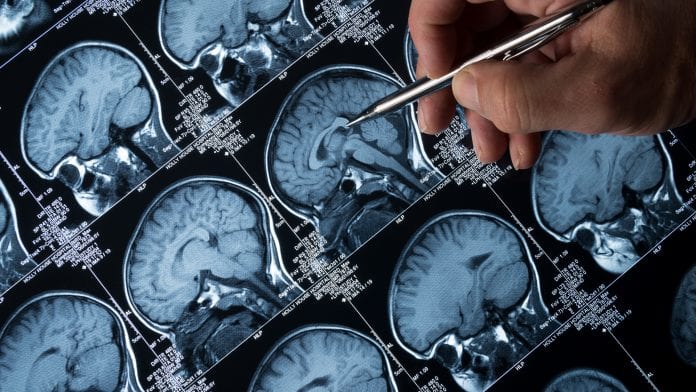
A group of scientists have used cutting-edge nanotechnology to extract blood signal of neurodegeneration, which they hope could enable a test for early Alzheimer’s disease.
The team at the University of Manchester has conducted a groundbreaking study in which they have discovered previously unseen blood biomarkers that could potentially be used to test for Alzheimer’s disease years before symptoms appear. The nanotechnology used has been uniquely developed and patented by the Nanomedicine Lab in Manchester.
Professor Nigel Hooper, Associate Vice-President for Research and Director of Dementia Research at The University of Manchester said: “The technology developed opens up new possibilities for the development of novel multi-analyte blood tests to predict the onset and development of a wide range of neurodegenerative disorders.”
For the study, which has been funded by the Medical Research Council and published in ACS Nano, the team extracted blood signals of neurodegeneration in a mouse model of Alzheimer’s disease.
Testing for Alzheimer’s
There is great potential for blood tests that can capture signs of neurodegeneration to help patients receive effective treatment and better manage their condition before significant damage occurs. Currently, Alzheimer’s disease is diagnosed using brain scans, which can only be conducted once someone shows symptoms of the condition – by which time it is too late to provide effective treatment.
Currently, detecting blood biomarkers for the condition is difficult as their levels are extremely minute, however the technology that has been developed by the team allows low blood signals to be magnified and analysed.
Dr Marilena Hadjidemetriou, the lead researcher of the study and Lecturer in Nano-omics said: “Hidden information in blood is likely to echo the complex cascade of events occurring in the brain of Alzheimer’s disease patients. We wanted to engineer a nanotechnology blood-mining platform in order to uncover this information and identify early signs of Alzheimer’s disease at the pre-disease state – before the onset of amyloid plaque formation in the brain.’’
Detecting biomarkers
Amyloid plaques are toxic to nerve cells and are a hallmark of Alzheimer’s disease. The team employed nanotechnology in order to enhance the sensitivity of mass spectrometry, a proteomic technique currently used to analyse the patterns of proteins in blood, and used tiny nano-sized spheres, called liposomes, as a tool to find disease specific proteins from blood.
When injected in mice with Alzheimer’s disease, nanoparticles spontaneously picked up hundreds of neurodegeneration-associated proteins onto their surfaces. The nanoparticles were then retrieved intact from blood circulation and the molecular signatures on their surface were analysed.
Professor Kostas Kostarelos, Professor of Nanomedicine said: “This study was rather like a fishing expedition: we didn’t know what was beneath the surface of the ocean. The nano-tool we developed allowed us to see deeper into the blood proteome, identifying proteins of interest that are directly associated with neurodegeneration processes in the brain, among thousands of other blood-circulating molecules.
“We hope that these early warning signs of Alzheimer’s disease could one day be developed into a blood test and we are actively seeking validation of these signatures in human blood.’’
Tracking the protein levels at different stages of Alzheimer’s disease allowed the team to identify complex disease-monitoring patterns.
Dr Catherine B. Lawrence, Senior Lecturer at the Division of Neuroscience and Experimental Psychology said: “We were extremely interested in the fluctuation of protein levels at different disease stages – from the pre-diseased state to the intermediate state between amyloidopathy and cognitive symptoms and finally symptomatic disease. These findings indicate that single time point blood biomarker discovery studies provide only a snapshot of the blood proteome.
‘’This could explain previously reported inconsistent results and the lack of clinically-used blood-based biomarkers for Alzheimer’s disease.’’






















